On a blustery Autumn morning, Trail (Anne) and I found ourselves once again with full sewage tanks and needed to take the Yamato (our Airstream) to the local trailer park for sweet relief. I had just finished creating a set of checklists to ensure we didn’t make any mistakes. The last trip I’d misplaced a Blue Ox Hitch Wrench which sparked a small misadventure. This time, we’d leave no task unchecked.
All was going well up until we needed to attach the Yamato to Batou (the truck). Airstreams come with a motorized jack on the front end of the trailer. Ours is an Atwood 3000 Power Hitch Jack. You need it to lift the Airstream up so you can align it with the truck and attach the hitch. It is also used to level the trailer from end to end. The Airstream is weighted to the front so it always rests on the jack when parked. On this occasion when we tried to raise the Jack it wheezed, moved a tiny bit and then stopped.
A challenge!
Plan A: Troubleshooting the Atwood Power Hitch Jack
Of course, the first thing we did was try the Atwood Power Hitch Jack — again, no effect. It didn’t want to go up or down for us. Our first thought was to check the power connections to the jack, they looked good. We wondered if the battery was dead, checked that and no, full charge. Thought perhaps the battery disconnect should be re-connected but that made no difference: nor should it, the jack has its own separate lead to the battery. We tried plugging the trailer back into our power source and still no luck. It seemed like the motor just didn’t have the oomph it needed.
Plan B: Mystery Parts
We recalled that Seattle Airstream Adventures Northwest, had told us if ever we ran out of battery power or the motor was kaput, we could use a port on the front to attach a power drill or use a manual crank to raise and lower the jack. I took a peek at the port, inside the hole was a smooth metal shaft with a smaller cross shaft sticking out of either side about a quarter inch back. I knew right away we had nothing in our power drill set that would connect to that. Thus we went to where the dealer had shown us the hand crank was.
Pulling it out we were puzzled. Its attachment point looked exactly like what was inside the Jack, a shaft with a cross bar in it. The other end was just a simple handle. It also had some cryptic warning on it that with a picture of some object that looked nothing like our jack. I even pulled the Jack apart looking for another port and found nothing. There was no way this thing was going to help. I went inside to find the manual for the Jack. Its cryptic instructions were not especially helpful, but I remarked that the picture of the hand crank looked nothing like the one we had. Showing it to Trail, she recalled finding some odd parts in a tub under the couch that might be an adapter. Eureka! I asked she go recover said implement.
The device in question posed as many questions as answers. It was a short brass object with a fitting on one end that indeed fit the Power Jack port, while the other end was a thin triangle of metal that fit absolutely nothing at hand. Later we discovered that this drill bit had a proper name according to Atwood: A Manual Crank Drill Adapter
Plan C: Power Drill + Manual Crank Drill Adapter
We pulled out the longest wrench we had, put the brass fitting into the Jack and tried to turn it. The wrench just didn’t hold onto the thin brass triangle well so that was a miss. We took out our ratchet set to see if any of the ratchets would grip, no dice, triangles have one fewer sides than you need to grip on. It was then Trail realized the triangle would fit well into a power drill chuck. Brilliant, our problem was solved. We had two such drills in the toolbox in the truck. Sure enough it fit great, clearly, that was what it was intended for!
Unfortunately, the power drill seemed to have exactly the same problem the Power Jack motor itself did: not enough power to lift or lower the trailer. The Airstream folks had made it sound as if a hand drill could easily move it but this was just not working. Trail thought perhaps the angle of the driveway and the stuff we’d stored in the trailer was such it had gone over what the motor could handle even though we were still well short of its maximum rated weight. We decided perhaps if I were to move myself in the back of the trailer that might counterbalance. Not so much it turned out.
Plan D: Airstream Support
Having exhausted what our dealer had instructed us in, we gave Seattle Airstream Adventures Northwest a call and ended up on hold for a good long while. We’d been parked only a short distance from the dealer and we decided rather than wait on hold we’d just drive down there and ask them in person. We got the hitch off the truck and headed over with the manual crank and strange adapter thing. We explained the problem to the lady at the parts desk and pointed to the different looking manual crank in our manual asking if they had something like that. She’d never seen one like the picture but verified the one we had was standard. She took it to the maintenance crew while we waited.
She and another service advisory returned with something of a major discovery. The 2016 Airstreams were the first to use the Atwood jacks, but the manual crank was the same one they’d been using the past 10 years and the two were not compatible. Checking they discovered that every 2016 Airstream on the lot had this problem. Not only that but those come from the manufacturer with power jack and manual crank already included so it’s possible every single 2016 Airstream has a manual crank that doesn’t fit the jack! Trail asked if we were the first, the insisted they’d neither had anyone come in nor that they’d had any word for Airstream about this.
Basically, they could not help us. They didn’t have the right manual cranks for Atwood Power Jack. They didn’t know what crank was needed and headquarters was closed for the day. Whee! We did make an appointment to have the motor looked at provided we could get the thing over to them! They said they would call when they had something, I’ve still not heard from them. How very disappointing.
Plan E: Impact Drivers
We went online and with the magic of the internet found ourselves a manual crank handle that fit the Atwood. If you need one you can order one here: Atwood 87891 Replacement Handle Power Jack. We ordered it with express shipping but it would not arrive until late the next day. Meanwhile, our tanks were filled to brimming. Lucky for us we are “MoochDocking” and can simply use our friend’s facilities but we really wanted to get this resolved and there was no guarantee this hand crank would work.
We instead headed to the nearest major hardware store looking for a more powerful drill. Home Depot had a number of options for us. What you want with a job like this is torque which is basically the force used to turn something. Drills tend to be about speed rather that high torque but a similar device is the Impact Driver which is designed for high torque rather than speed. The problem is that Impact Drivers are fitted not with a three fingered chuck but is designed to take only hex screwdriver bits. We knew from experience this would not work with the Manual Crank Drill Adapter and its brassy tri-head adapter. With the help of the attendant and said brass triangle in hand, we did find another bit that fit the impact driver and had a similar head as the brass coupler. Not exactly the same, but it was worth a shot.
Then again perhaps not. It turns out it was really for turning wall hooks or loops and the central shaft opening was too small to fit the Jack port. By this point in time, it was late, and we were tired so we cleaned up at our friends’ house and went to the trailer to do some computer work and go to bed.
Plan F: Hammer Drill / Impact Driver Combo
Back we go to the hardware store to return the impact driver and see what else we could find. We found a Ryobi brand Hammer Drill / Impact Driver that was a sort of two in one deal. It had the three fingered chuck of a drill but had high torque settings and a bunch of other whiz-bang features. Of course, it was the most expensive portable drill on offer. We bought it and headed back home.
The manual crank drill adapter fit nicely and by golly, it did indeed turn the jack… for about 5 seconds and then started to overheat. Clearly a superior drill, but it was becoming apparent it would take mighty forces to move the trailer. I tried using my body weight as a counterbalance again and that helped some but it was slow and impractical. Still, it was a great drill, clearly better than ours so we decided we’d keep it. If you want one of your own (it’s got lots of great features) you can get one here: Ryobi 18-volt One+ Lithium-ion Cordless Hammer Drill/driver Combo Kit
Plan G: Atwood Manual Hand Crank
We took a break for lunch and when we got back we were pleased to discover the manual crank arrived somewhat earlier than scheduled. With great curiosity and little other hope we unwrapped it. It looked like the picture and the linking mechanism looked like the brass fitting we’d been using. Signs were good. I plugged it into the winch and started to turn. I was surprised how easy it was to turn and it lifted the trailer no problem. A bit slow going but perfectly functional. With a bit of effort, we managed to get the Yamato hooked up, taken to the dumping station, and back in place before rush hour traffic descended on us.
To our great surprise on returning back we found the built-in motor on the jack worked just fine for unhitching the trailer and leveling it. Trail came up with what I think is the most plausible explanation. The trailer was parked at something of an angle such that we could not completely level it with the jack when parked. Over the time it was parked it shifted back just a bit which left the jack shaft at just an ever so slight angle which dramatically increased the force needed to lift and lower it.
To be on the safe side we also thoroughly cleaned and lubricated the power jack shaft with WD-40 Specialist Silicone the power jack shaft now that we could fully extend it. It had some duct tape smashed in around the bottom and some sticky stuff a little ways up from there. Apparently, that was a result of the service guys not fully removing the tape that holds protective shipping covers in place. Since it was only at the bottom it seemed unlikely it caused the problem but best to cover all the bases.
And that folks is what we like to call an adventure. There are always interesting new challenges but you have to keep plugging away until you solve it, learn a lot in the process, and accomplish something for yourself.
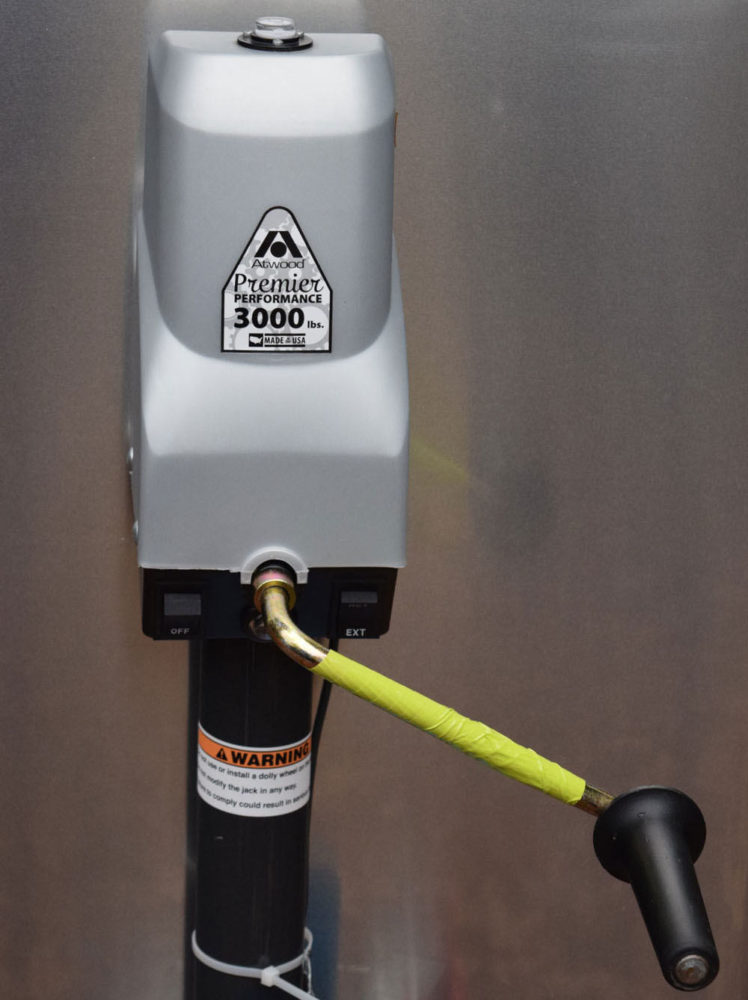
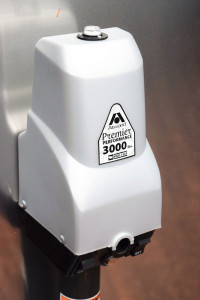
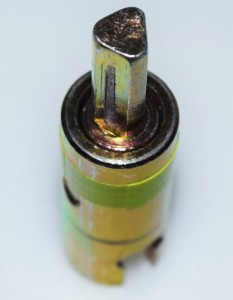
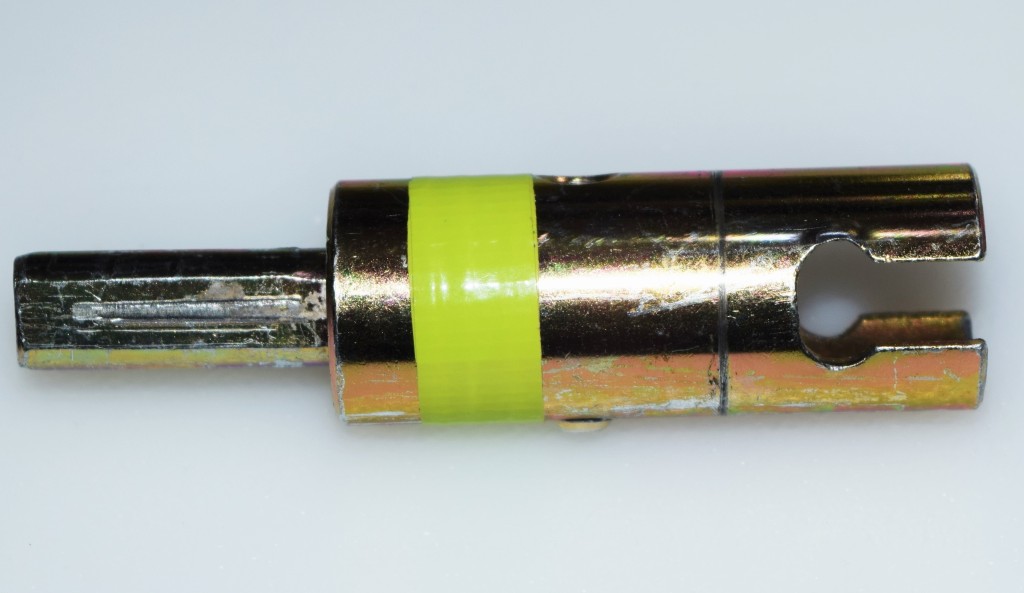
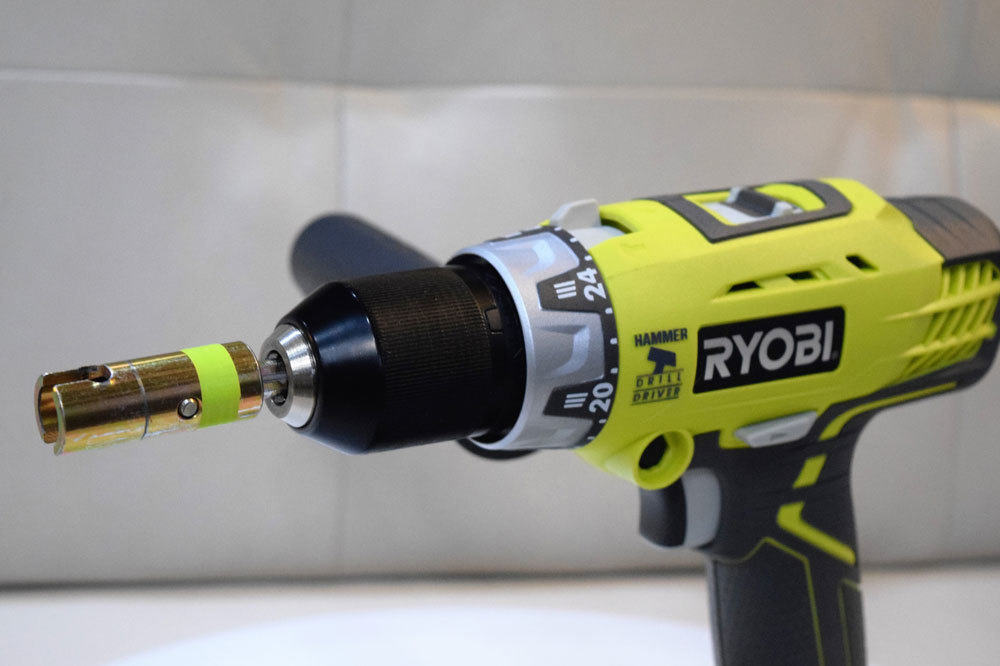
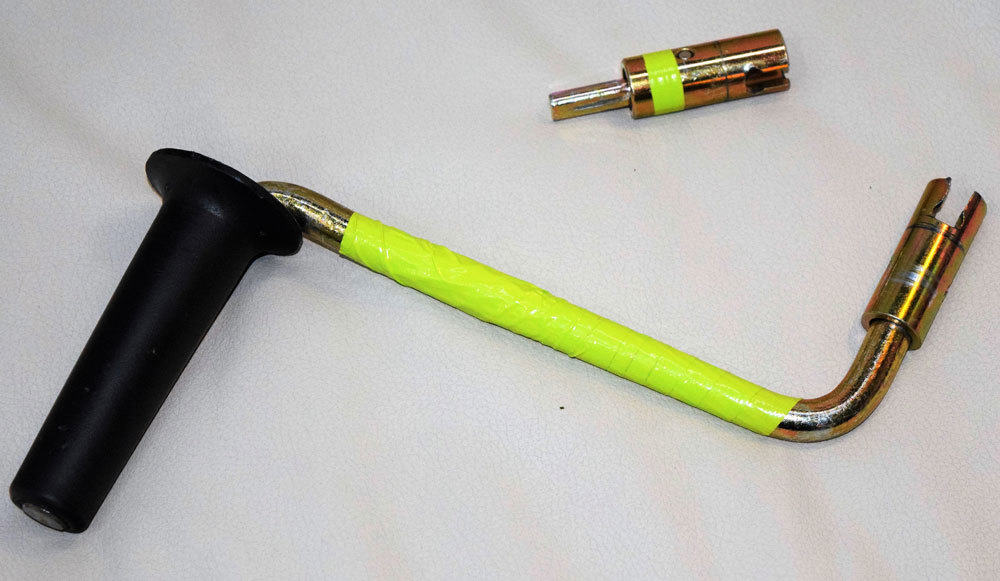


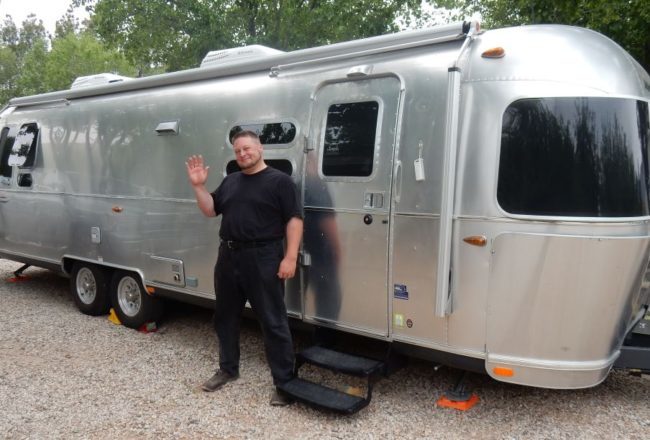


2 Comments
You will want to purchase some stabilizer jack pads. They can be used in a stack to help level up the sloped ground and thereby prevent over extension of your jack which could have been part of the issue. There are a number of brands and styles of these but here is one such set
http://www.campingworld.com/shopping/item/stabilizer-jack-pads-4pk/29164
Also if you find yourself in this kind of literal jam again there is an easy solution. Create a stack of lumber or some other solid material right near your built in jack that is tall enough so your hydraulic jack can raise up the trailer a few inches. Set your hydraulic jack on it and raise it until it is taking the weight off the built in jack. The motor should then be freed up from the excess load and will then able to engage.
Thanks for the tips!
I should explain the trailer jacks in the Airstream for clarity. There is one powered jack at the front of the trailer used both to level it end to end, and to raise and lower the trailer for hitching. It is a mechanical screw jack rather than hydraulic. There are four stabilizing jacks, one at each corner and are hand winched up and down. They are very weak and only keep the trailer from rocking once you have it in place. They can’t actually change the level of the trailer at all. The only other jack we have is an emergency jack for changing tires (not hydraulic), though that wasn’t in play here.
We have a thick block of wood we put under the leveling jack to keep it from sinking into the ground and to give it a bit more height. I think one of the problems here is we had two additional plastic leveling blocks (like the ones you linked) on top of that and they slipped under the pressure a bit creating the slight angle. We need to get a thicker wood block. Multiple blocks seems to be the source of the slippage, especially when there is a lot of water as their has been. We just moved it again today and tried without the plastic blocks but it wouldn’t go high enough to unhitch without them. Before our next trip we will seek out a taller single block.